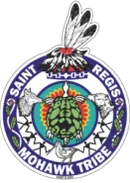-
Community & Family Services
- Care Management Program
- Child Support Enforcement Unit
- Family Support
- HCBS Waiver
- Home Improvement Supplement Program (HIP)
- Homeowner's Assistance Fund
- Individual Residential Alternatives (IRA)
- Individual Supports and Services (ISS) - Housing Subsidy Program
- Office of the Family Advocate
- Three Sisters Program
- Tribal Vocational Rehabilitation (TVR)
- Community Partnership Fund
- Economic Development
- Education
- Environment
- Executive Director's Office
- Finance
- Generations Park
- Grants & Contracts
-
Health Services
- A/CDP Outpatient
- A/CDP Prevention
- Partridge House (Inpatient)
- Ronthahiiohsthá:ke Clubhouse
- Business Office
- Centering Pregnancy
- Dental Clinic
- Health Promotion and Planning
- Laboratory
- Let's Get Healthy - Diabetes Center for Excellence
- Medical Clinic
- Mental Health - Kanikonri:ihne (Good Mind Counseling)
- Outreach Chronic Care Nursing
- Pharmacy
- School-Based Health Center
- Home Improvement Supplement Program (HIP)
- Human Resources
- Office for the Aging
- Office of Emergency Management and Safety
- Planning and Infrastructure
- Social Services Division
- Tribal Historic Preservation Office
- Tribal Police
The Reynolds Metals Corporation (RMC) Site includes a portion of the St. Lawrence River that borders the RMC facility, The recently-shuttered RMC aluminum production plant is located on the St. Lawrence River, approximately eight miles east of the village of Massena, New York. The former RMC facility, which is not part of the site, was addressed under New York state authorities.
During its operation, various types of industrial waste were disposed of throughout the Reynolds facility. Reynolds also discharged contaminants to the St. Lawrence River through four permitted outfalls. Before actions were taken to address the contamination in the St. Lawrence River, polychlorinated biphenyls (PCBs) were the primary contaminant found in the St. Lawrence sediment adjacent to the Reynolds facility that could be attributed to the facility. Other RMC-related contaminants that were found in the St. Lawrence River sediment included aluminum, furans, and polyaromatic hydrocarbons (PAHs).
Saint Regis Mohawk Tribe (SRMT) tribal lands, known as Akwesasne (Land Where the Partridge Drums), are located to the east and Route 37 and the Grasse River are situated to the south and west, respectively. The SRMT tribal lands are divided by the United States and Canadian border and subdivided by Franklin County in New York and the provinces of Ontario and Quebec in Canada. According to the SRMT, Akwesasne has a population of 12,400 people and covers a land area of approximately 16,640 square acres, which includes wetlands, agricultural land, woodlands, and light commercial development. The consumption of fish or wildlife from contaminated areas is of special concern because of the proximity of the Mohawk Tribal lands (see "Activity and Use Limitations" for current New York state and SRMT consumption advisories).
The RMC facility was placed on the New York State Department of Environmental Conservation (NYSDEC) Registry of Inactive Hazardous Waste Sites in 1987. RMC, under a Consent Order with NYSDEC, agreed to investigate the contamination at the facility; this investigation excluded the St. Lawrence River. In 1992, NYSDEC issued a Record of Decision (ROD) that called for a combination of excavation and treatment of areas highly contaminated with PCBs and other contaminants and consolidation and containment of other contaminated areas on the grounds of the facility. In 1993, RMC and NYSDEC signed a Consent Order that required RMC to implement the remedy in the ROD. In 1995, NYSDEC issued a ROD amendment calling for off-site disposal of highly contaminated soils and sediments and on-site disposal of lesser contaminated soils and sediments.

